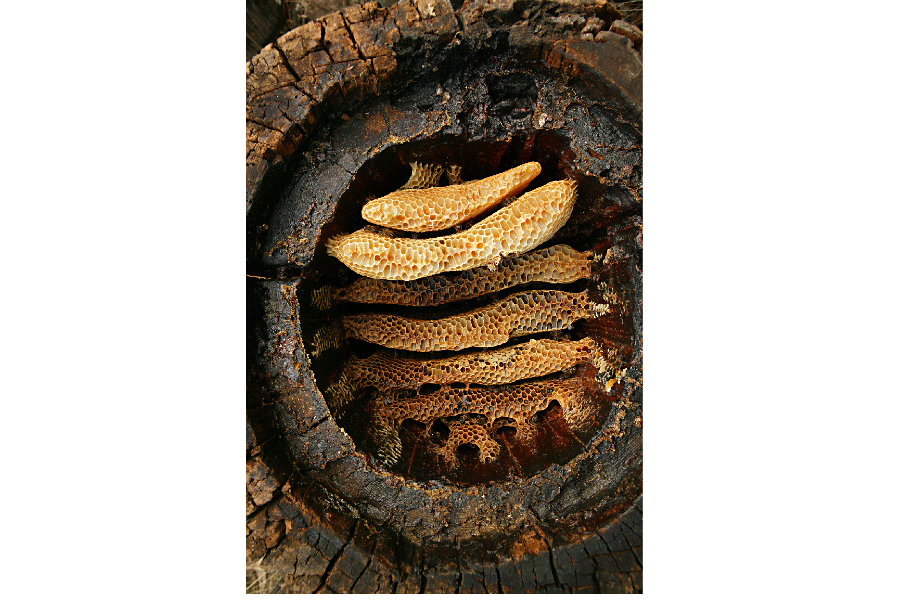Humans have minded their own beeswax for thousands of years
Loading...
For how long have humans been exploiting the labor of honeybees? More than 8,500 years, according to a new study.
Researchers found beeswax residue on fragments of ancient cooking pots from archeological sites across Europe, the Middle East and North Africa. Their findings were published Wednesday in the journal Nature.
"People have been living with honeybees for a long time and they've been exploiting them," study lead author Mélanie Roffet-Salque tells The Christian Science Monitor in an interview.
"The most obvious reason for exploiting the honeybee would be for honey, as this would have been a rare sweetener for prehistoric people. However, beeswax could have been used in its own right for various technological, ritual, cosmetic, and medicinal purposes, for example, to waterproof porous ceramic vessels," Dr. Roffet-Salque said in a press release.
The researchers aren't sure how ancient peoples got to the bees' products, but Roffet-Salque has a couple ideas.
"It could have been honey-hunting, going into the forest and following the bees," she tells the Monitor. In that scenario, people would have found the bees' natural hives in nooks like hollowed out trees.
But it wouldn't be that far fetched to suggest humans learned to make their own simple log hives too, Roffet-Salque says. They could have taken a hollow log, put the bees in it and covered it with a slate, she explains.
In either case, the people could have harvested the honeycomb and pressed it in their hands to push out the honey and leave the wax. They wouldn't have needed to be very technologically advanced, Roffet-Salque says.
Were these humans even using the honey?
"We don't have evidence for honey," says Roffet-Salque. "We can't detect the honey because it's full of sugars, so it's very soluble and it doesn't survive archeological times" if it gets wet.
But the researchers can identify a sort of chemical fingerprint of beeswax in the ancient pots. "What we detect is the beeswax because it's got very characteristic compounds that are very resistant to degradation."
But Roffet-Salque thinks humans were using both honey and beeswax. It doesn't make sense to not use both, she says. "If you go into all the trouble in getting honey, then you might as well use the beeswax," and vice versa.
Waxy chemical compounds on pot fragments aren't the only evidence in the archeological record for human bee use.
"The lack of a fossil record of the honeybee means it's ecologically invisible for most of the past 10,000 years. Although evidence from ancient Egyptian murals and prehistoric rock art suggests mankind's association with the honeybee dates back over thousands of years, when and where this association emerged has been unknown - until now," study co-author Richard Evershed said in the press release.
Dr. Evershed goes on to say that the chemical evidence is "unequivocal." Furthermore, he said, "It shows widespread exploitation of the honeybee by early farmers and pushes back the chronology of human-honeybee association to substantially earlier dates."
Although this study finds widespread use of honeybees, the researchers found a surprising lack of beeswax at northern archeological sites. Above the 57th parallel North latitudinal line, Roffet-Salque and colleagues found no beeswax.
"We've analyzed lots of sherds from those places," Roffet-Salque says. "And we're finding lots of animal fats, but we've not found any beeswax."
This no-bee zone stretches across regions like modern-day Scotland, Finland, Sweden, Norway and Ireland too.
"It probably means that bees were absent at the time, so people couldn't get the beeswax and honey," Roffet-Salque says. "We think we've seen the ecological limit of where bees were living at the time."








